Have you ever stepped into a room and immediately sensed something felt weird… but couldn’t quite put your finger on it? Without proper scale and proportion, a room’s design can crumble quickly, and leave it feeling… off. If you want to get it right, you need to learn how to balance the objects in your room with each other and the room itself.
Scale vs. Proportion
Scale refers to the size of objects in relation to the room, or how well they seem to fit together in the space. Proportion is the relationship between items, or how well they seem to fit with each other. In order to get it right you need both – the things in your home need to look right with each other and with the room itself.
Having a home that looks balanced is easier said than done, so we have some expert tips to help you avoid some of the most common mistakes and create a home where everything works together in harmony.
Mistake #1: Choosing the Wrong Size Rug
One of the most common mistakes is choosing the wrong rug size. Rugs can be a significant investment, and novice designers might be tempted to cut costs by going with a smaller size – but don’t fall into this trap! A too-small rug can make your room feel cramped. On the other hand, a too-large rug can leave edges in awkward places and feel bulky. The right size will balance with your furniture and your room.
Rug placement and size needs will be different in every room, so following a rug guide like this can steer you in the right direction. For example, in the living room a good rule of thumb is to select a rug that’s large enough to either accommodate all the furniture completely on top of it or have only the front two legs of each furniture piece placed on it.

Why This Doesn’t Work: The rug and furniture chosen are noticeably undersized for the space! Relying on a floating rug island with a single chair and side table to carry the design is ineffective (and a trip hazard). To achieve balance, this room needs more furniture. You’d either need to choose seating that matches the scale of this rug to create a small conversation area, or use a larger rug to anchor larger furniture to fill the room.
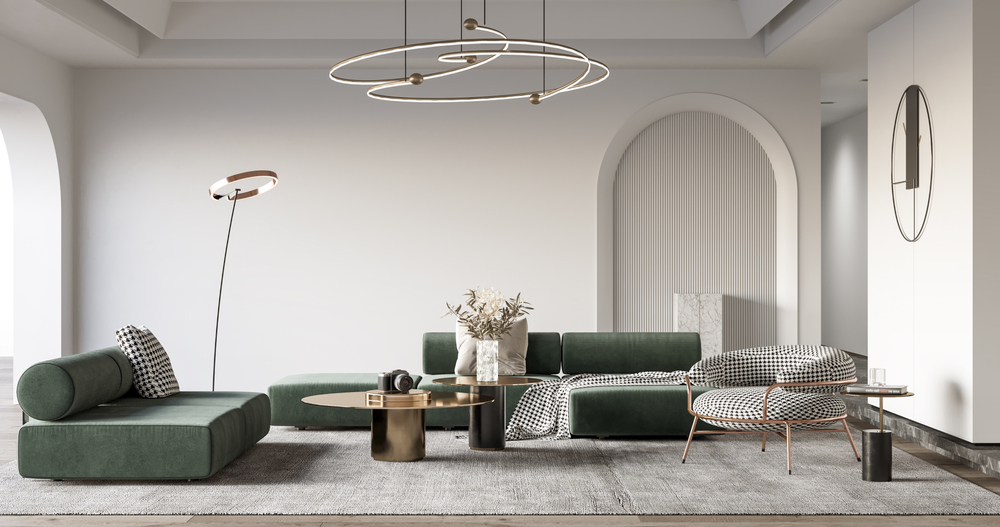
What to Do Instead: We cannot emphasize this point enough: selecting the right size rug is everything! This gorgeously balanced room proves it’s worth it. This large living room has plenty of furniture, and a large rug like this provides an essential foundation that anchors the space and ties the room together. In any room, a well-fitted rug will ground the space, making it feel cohesive.
Mistake #2: Not Enough Light
Another common mistake is to use lighting that’s mismatched with scale of the room or in proportion to the furniture. Yes, scale and proportion matter in lighting too! Lighting that is too dim or overpowering can really mess up the feel and functionality of a space.
The key is layering your light – using various sources and types of light throughout the room to give a well-balanced light throughout the space by addressing common issues like dark corners and poorly lit work areas. A well-chosen array of light fixtures will make your home look like a designer’s been through, but how do you know how exactly much light is right for your space?
To determine your lighting needs, first you’ll have to understand a few basic light measurements. Lumens are a measurement of the amount of light emitted by a light source. A foot candle is a measurement that describes how bright a light source appears to be from one foot away. You’ll need to use both of these to calculate your lighting needs!
Larger rooms need more light than smaller rooms, and task-oriented spaces within those spaces (like a kitchen counter, office desk, or reading chair) will need more light than the rest of the room. To get an idea of how much light you’ll need, start by measuring the width and length of the room, then multiply those two numbers to find the room’s square footage. Next, use the chart below to determine how many foot candles your room or space will need.
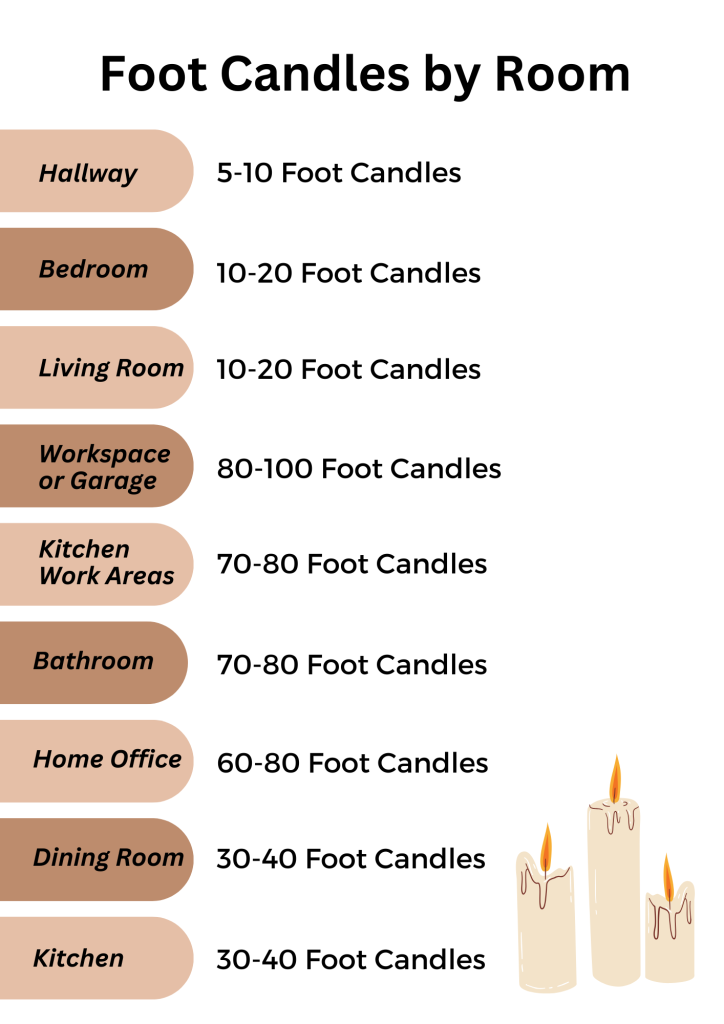
The last step is to multiply your room’s square footage by the recommended foot candle requirement to determine the number of lumens your space requires. Most modern light bulbs have their corresponding lumens included on the packaging. Simply add up the lumens for each bulb in your room to see if you’re in the right range.
Example: A 20’x20’ living room has 400 square feet. The recommended foot candles for living rooms is 10-20. 400 x 10 = 4,000 and 400 x 20 = 8,000. In this room, you would want to add up the lumens for your light bulbs and shoot for somewhere between 4,000 – 8,000 lumens for the entire space.
Keep in mind that this recommendation is for typical use. You also need to take into account all of the ways you’ll use the room, and plan balanced lighting for each situation. If the living room above was also used for movie nights and has a home office in the corner, you would need a way to accommodate those activities too. You’ll need fewer lumens for movies (dimmer switches or small lamps are a great option) and extra light for work (a desk lamp, extra overhead light, or wall sconce would work well).
Remember, these numbers are general recommendations. In addition to being balanced, your lighting also needs to be comfortable. Start with the recommendations, then tailor your lighting from there to get what works best for you.
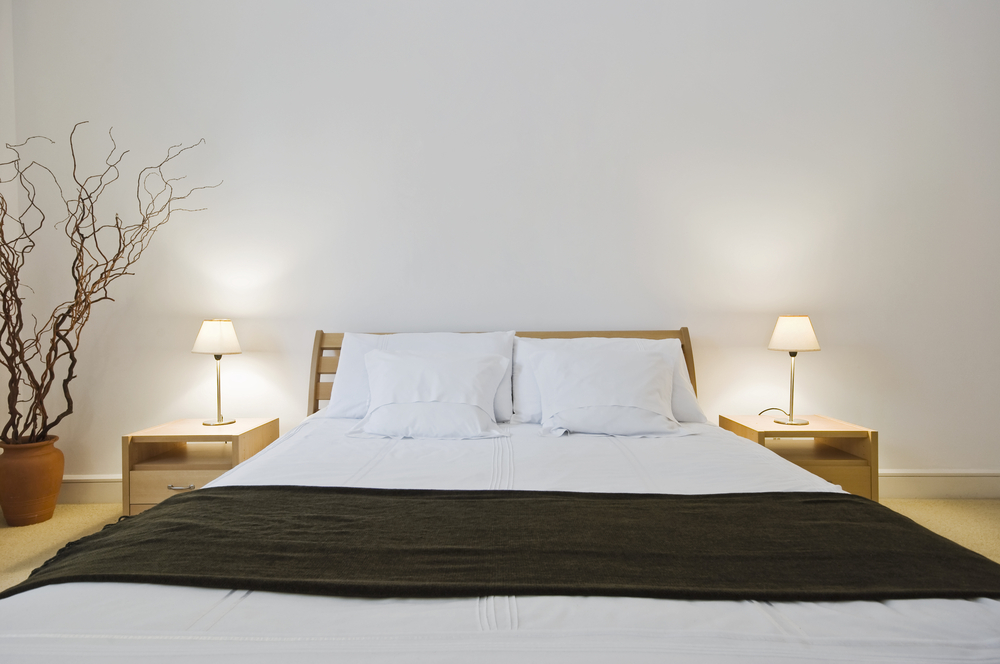
Why This Doesn’t Work: These small lamps are undersized for the scale of the bed and the room, which is both an aesthetic and a practical issue – nobody likes squinting at their late-night read or tripping over the black shoes on the floor in the middle of the night.
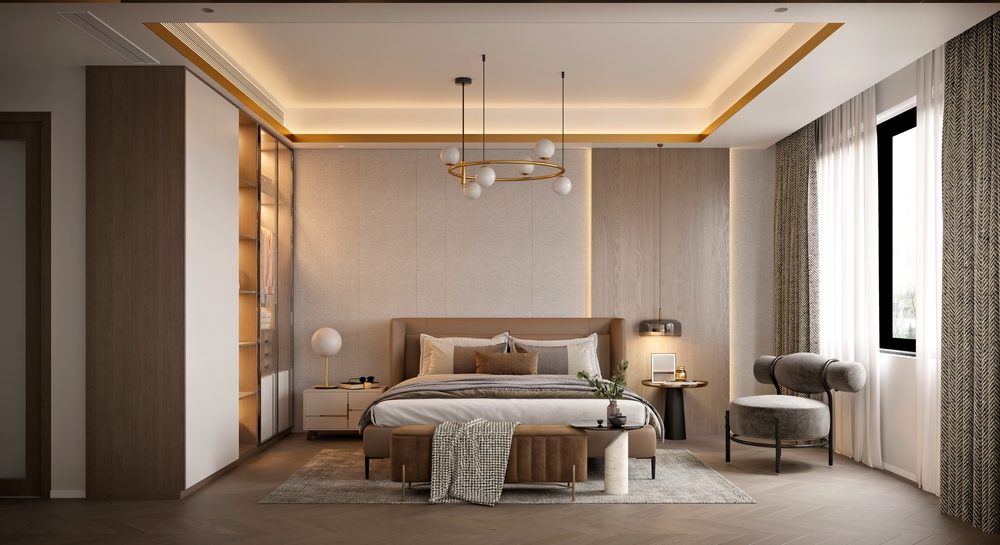
What to Do Instead: Using a variety of light sources ensures sufficient light coverage and adds depth, enhancing the room’s overall atmosphere. In this particular space, the lamp, pendant, chandelier, and accent lighting have been thoughtfully chosen to provide just the right amount of light and are in perfect proportion with the room’s other features. Whether you’ll be using the space for a late-night book or preparing to take on your day, this room promises to exceed your expectations functionally and aesthetically.
Mistake #3: Picking the Wrong Size Chandelier or Pendant
In addition to getting the amount of light right in your space, it’s also important to get a fixture that’s to scale. Since chandeliers and pendants typically serve as a room’s focal point, it’s especially important to get it right! To avoid picking the wrong size, a few tips:
- Measure your room’s width and length in feet, then add those two numbers together to determine the width of your chandelier or pendant in inches. For example, if your room is 10 feet x 16 feet, your chandelier or pendant should be around 26 inches wide (except in a dining room – no head bumps please!).
- Measure your room’s height. We recommend adding 3 inches of height to your fixture for every foot of space between your floor and ceiling. For example, if your ceilings are 10 feet tall, your chandelier or pendant should be around 30 inches tall.
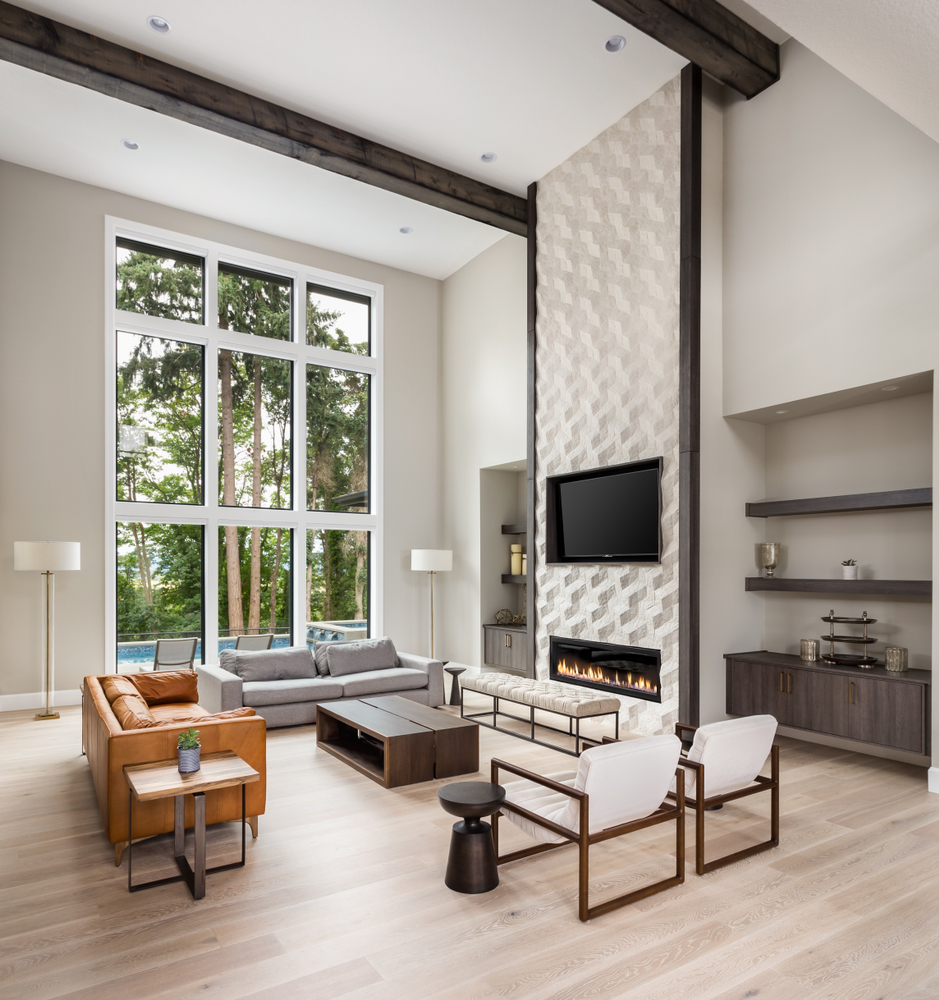
Why This Doesn’t Work: We can understand why this room doesn’t have a chandelier with those gorgeous windows as a focal point. But in the evenings, this room’s focal point will disappear into the shadows and the high vaulted space above will feel empty. A chandelier would fill this void and give this room a gorgeous 24/7 focal point. It would also provide essential lighting for the evening hours and create a cozier, more intimate atmosphere than a grid of bright recessed lights.
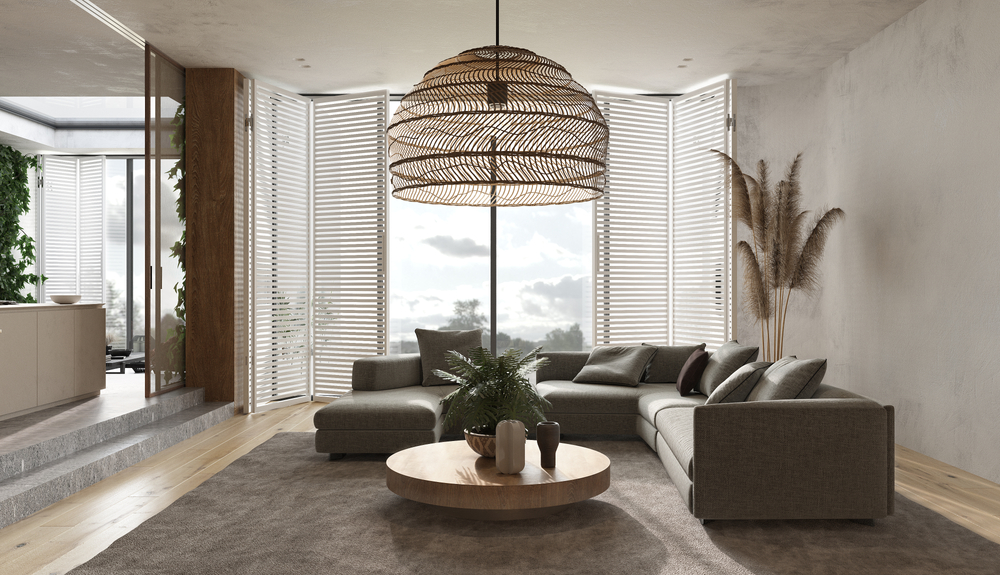
What To Do Instead: Use the guidelines above to find the ideal fixture size for your space. In this room, the pendant is slightly oversized, but it’s okay to make judgment calls when deciding what’s going to work best in your space since you’re the one who has to live with it! In this room, the pendant serves as the focal point and creates a more intimate conversation area. By occupying the vertical space, it brings harmony and balance to the design. If you need extra help selecting the correct size fixture or installing it, don’t be afraid to ask an expert!
Mistake #4: Small Wall Hangings on a Large Wall
We love how art and other wall hangings add personality to a space, but we often notice inexperienced designers or homeowners creating a tiny island of art in a sea of empty wall space. It’s a common mistake, but is one that is easily avoidable with a few essential tips!
When it comes to hanging pictures on a large wall, you generally have two options: creating a gallery wall or opting for a larger piece of art. Whichever you decide on, the resulting arrangement or artwork should be around 60-75% of the width of the furniture it’s above and take up 60-75% of the wall height above it for a perfectly balanced look! If you’re using multiple pieces, space them out to get the right scale. Don’t be afraid to experiment with different layouts and art pieces – you may be surprised by what combinations work.
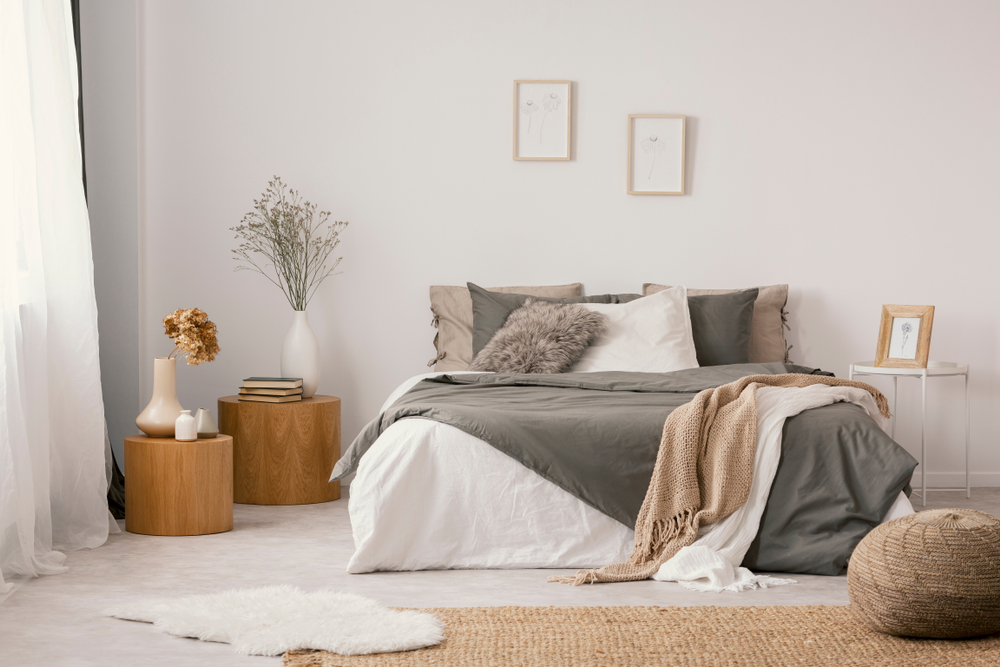
Why This Doesn’t Work: The frames above this bed are too small, throwing off the whole balance of the room. Luckily, the solution to this problem is simple! You can either keep the existing frames and incorporate more pieces for a gallery wall or replace them with something larger. Whichever you choose to do, getting the scale right is a non-negotiable!
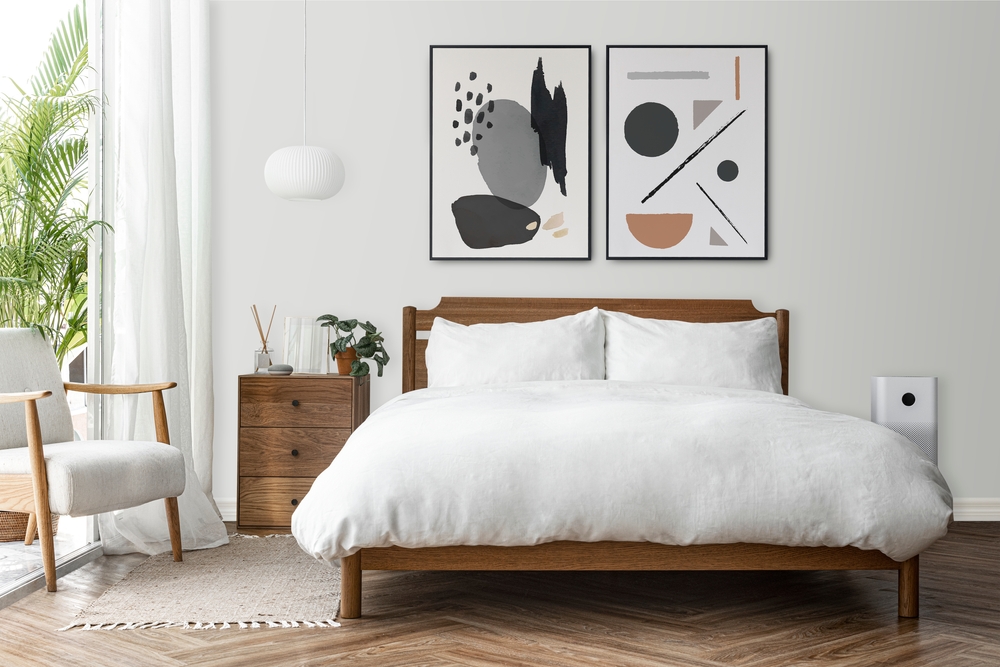
What To Do Instead: The art in this room is a much better size for the room and the bed! While it might be a touch more than 60-75% of the bed’s width, it’s spaced appropriately and doesn’t hang so high that you’ll need a stepladder to see it. The result is a gorgeous room with perfect proportions and scale. Hanging the right art in the right place is critical to a design that drops jaws.
Mistake #5: Not Styling with Scale in Mind
If we could give one tip to aspiring homeowners/designers it would be this: details are everything. To achieve a beautifully designed room, you need to pay attention to both scale and proportion when it comes to accessorizing.
When curating pieces to display in your room, some basic principles apply. First, create little moments by using your decor in groups! For example, pair a small vase with some books and a frame. Most designers say that groups look better in odd numbers, so shoot for 3 or 5 rather than 2 or 4. Second, stagger the heights and sizes of the objects in a group. Playing with proportions can help you to get a design that’s both balanced and visually interesting. Last, use a variety of colors, materials, and patterns to keep things interesting and achieve the perfect balance!
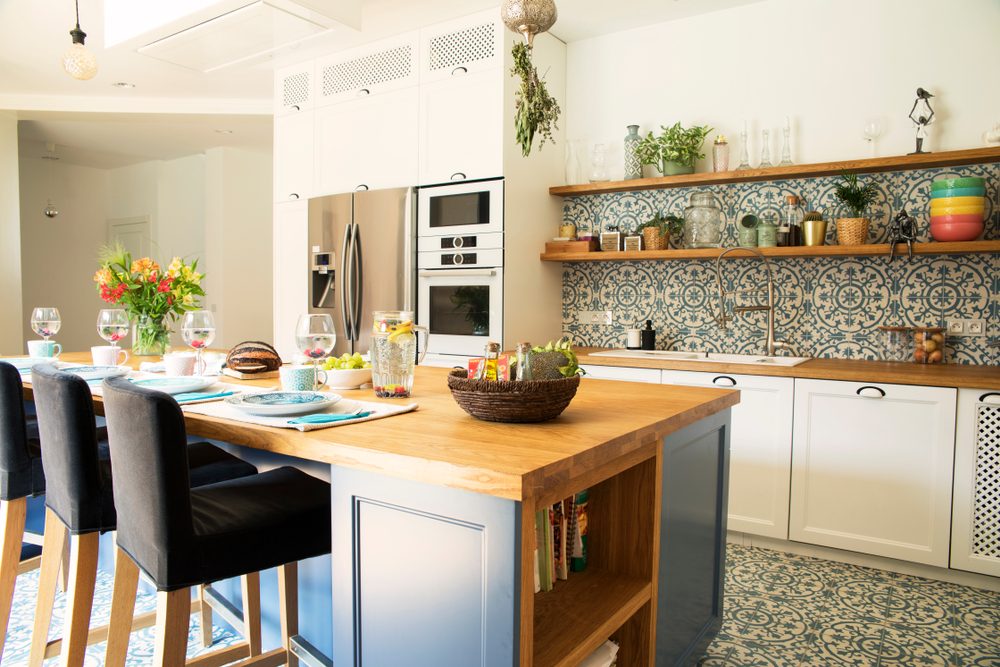
Why This Doesn’t Work: While this kitchen is full of vibrant personality and patterns, the overall effect is a tad overwhelming and disorganized. The island feels slightly overrun with a bunch of small items similar in size (although the flowers at the end do add some much-needed height). The top shelf is unbalanced and half empty, while the bottom shelf is stuffed with a row of, again, similarly-sized items. In both places, creating groups with space would give the decor a bit of room to breathe, and give each design moment a chance to shine.
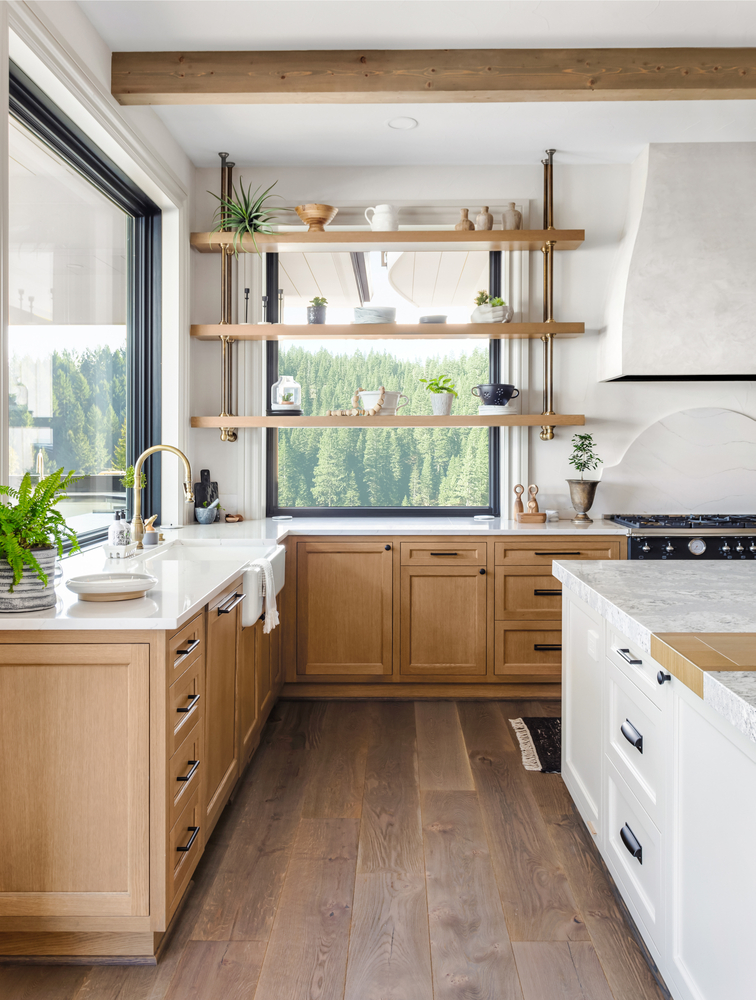
What To Do Instead: This room beautifully showcases the result of investing time in thoughtful styling! Items on the counter are grouped to the edges, leaving plenty of work space. Items on the shelves are spaced out to fill the shelves without blocking the light, a must for this stunning storage solution that maximizes shelf space without sacrificing the view. Even the large shelving feels unobtrusive because it’s to scale with the rest of the room. While this kitchen has a more minimalist vibe, paying attention to scale and proportion can give you a balanced look with any style from a traditional living room to a maximalist bedroom.
—
Understanding scale and proportion is essential for making design choices that lead to a balanced and harmonious home. Whether choosing the correct size rug to ground a room, selecting a beautiful light fixture, hanging wall art with precision, or curating decorative pieces thoughtfully, every detail matters. By avoiding these four common mistakes and following our tips, you can transform your home into a space that’s the perfect blend of form and function. For more personalized advice, call Madison Creek Furnishings! Our experts would love to answer your questions and help you as you design a home you love.
